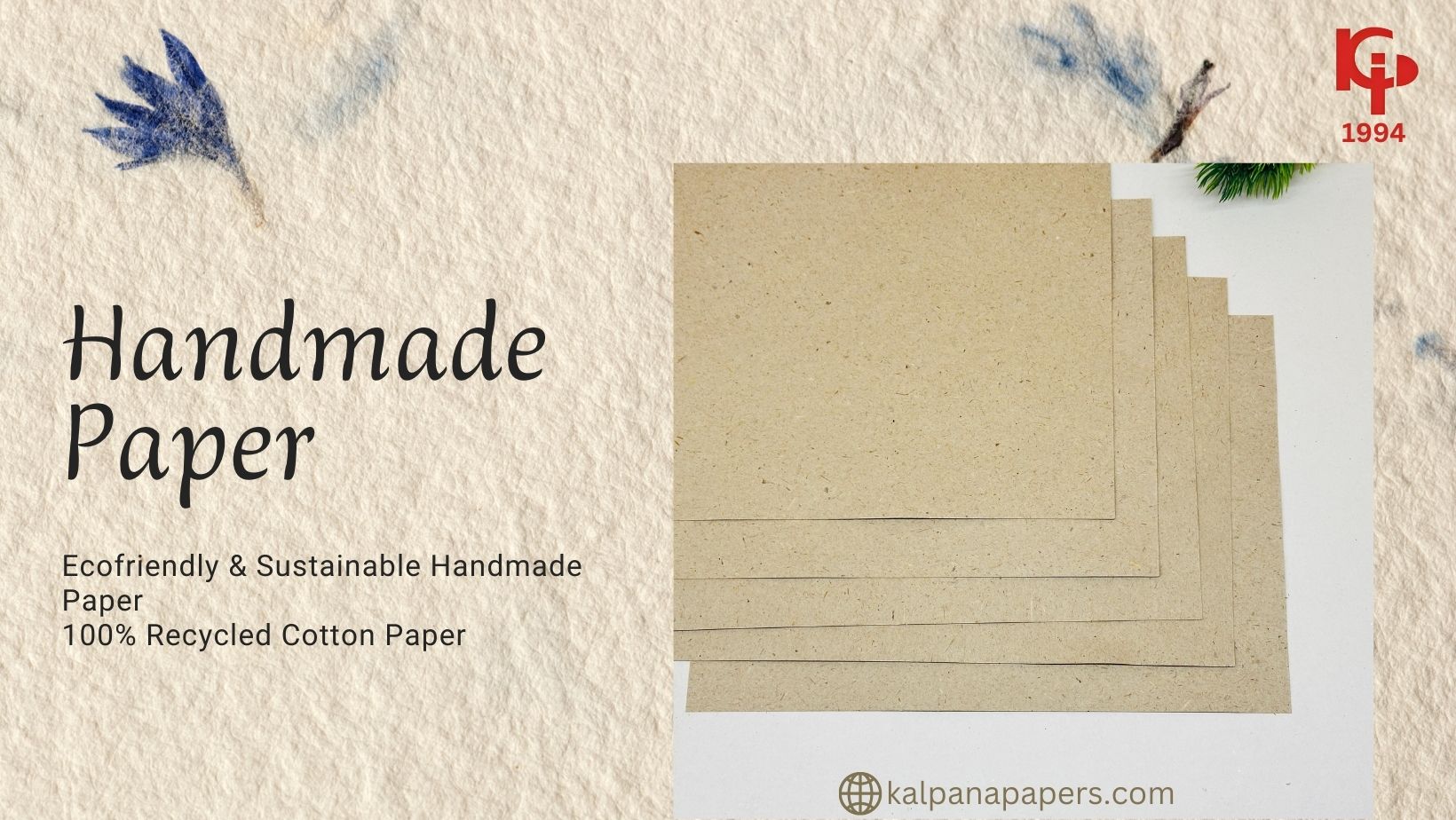09-Jul-2024 by
Handmade PapersThe Art of Handmade Paper in India: A Journey Through Tradition and Craftsmanship
Handmade paper is a testament to the harmony between nature and human creativity. In India, this ancient craft is deeply rooted in tradition, reflecting the country's rich cultural heritage and artistic excellence. The journey of handmade paper in India is a fascinating tale of sustainability, innovation, and craftsmanship. This blog explores the intricate process, historical significance, and contemporary relevance of handmade paper in India.
Historical Roots of Handmade Paper in India
The tradition of papermaking in India dates back to the 3rd century CE. Initially introduced by the Chinese, the technique spread across Asia, eventually finding a unique expression in India. Indian artisans adapted and refined the process, creating papers that were not only functional but also aesthetically pleasing. These papers were used for religious texts, official documents, and artistic endeavors.
The Process of Making Handmade Paper
Material Selection:
The journey begins with the selection of raw materials. Handmade paper in India is often made from cotton rags, jute, banana fibers, and other natural materials. This eco-friendly approach ensures that the paper is sustainable and biodegradable.
Pulp Preparation:
The selected materials are cleaned, cut into small pieces, and soaked in water. They are then beaten to a pulp using traditional tools. The consistency of the pulp determines the texture and thickness of the paper.
Sheet Formation:
The pulp is poured into a mold and evenly spread to form a thin layer. This process, known as sheet formation, requires precision and skill. The mold is then gently lifted, allowing the excess water to drain.
Pressing and Drying:
The wet sheets are carefully pressed to remove additional water and to ensure uniform thickness. They are then hung or laid out to dry naturally. This drying process can take several days and requires careful monitoring to prevent warping or cracking.
Finishing Touches:
Once dried, the paper sheets are polished and trimmed. Artisans often add decorative elements such as embedded petals, leaves, or intricate patterns to enhance the paper's beauty.
The Cultural Significance of Handmade Paper
Handmade paper holds a special place in India's cultural and religious practices. Historically, it was used for writing sacred texts, manuscripts, and important legal documents. The durability and beauty of handmade paper made it ideal for preserving important information.
In the realm of art, handmade paper serves as the canvas for various traditional art forms, including miniature paintings, calligraphy, and block printing. Each piece of handmade paper, with its unique texture and imperfections, adds character and depth to the artwork.
Contemporary Uses and Innovations
Today, handmade paper continues to be cherished for its aesthetic appeal and eco-friendly attributes. Modern artisans and designers have found innovative ways to incorporate handmade paper into various products:
Stationery:
Handmade paper is popular for making greeting cards, notebooks, envelopes, and other stationery items. The tactile experience of writing on handmade paper is unmatched, making it a preferred choice for special occasions.
Packaging:
Eco-conscious brands are increasingly using handmade paper for packaging. Its natural texture and biodegradability align with sustainable business practices.
Interior Decor:
Handmade paper is used in lampshades, wallpaper, and home accessories. Its organic look adds warmth and elegance to interiors.
Fashion:
Designers are exploring the use of handmade paper in clothing and accessories. Paper jewelry, handbags, and even garments have been created, showcasing the versatility of this material.
Challenges and Sustainability
Despite its many advantages, the handmade paper industry in India faces several challenges. The labor-intensive process requires skilled artisans, and the industry often struggles with fair wages and working conditions. Additionally, the competition from cheaper, machine-made paper poses a threat to the traditional craft.
However, the growing awareness of environmental issues is driving a resurgence in demand for handmade paper. Consumers are increasingly valuing sustainability and craftsmanship, providing a lifeline for this age-old industry. Initiatives by government and non-governmental organizations aim to support artisans, improve working conditions, and promote handmade paper as a sustainable alternative.
Notable Regions and Artisans
Several regions in India are renowned for their handmade paper production, each with its unique techniques and styles:
Jaipur, Rajasthan:
Jaipur, Rajasthan is renowned for its Sanganeri handmade paper, particularly from Kalpana Paper. This paper is celebrated for its smooth texture and vibrant colors, crafted by skilled artisans using traditional methods passed down through generations. The rich heritage and meticulous craftsmanship make Sanganeri paper a cherished material for artists and paper enthusiasts alike.
The Future of Handmade Paper
The future of handmade paper in India looks promising as more people recognize its value. Educational programs and workshops are being conducted to train a new generation of artisans. Collaborations with designers and brands are helping to introduce handmade paper to global markets.
Consumers play a crucial role in sustaining this craft. By choosing handmade paper products, individuals can support artisans and contribute to environmental conservation. The unique charm of handmade paper, combined with its eco-friendly nature, makes it a timeless choice for various applications.
Conclusion
The art of handmade paper in India is a testament to the country's rich cultural heritage and commitment to sustainability. From its historical roots to modern innovations, handmade paper embodies the perfect blend of tradition and creativity. By appreciating and supporting this craft, we can ensure that the legacy of handmade paper continues to thrive, enriching our lives with its beauty and craftsmanship.
In this journey through the tradition and craftsmanship of handmade paper in India, we celebrate not just the paper itself, but the artisans who pour their heart and soul into creating each unique sheet. Their dedication and skill keep this ancient art alive, reminding us of the value of sustainable and artisanal practices in our modern world.

